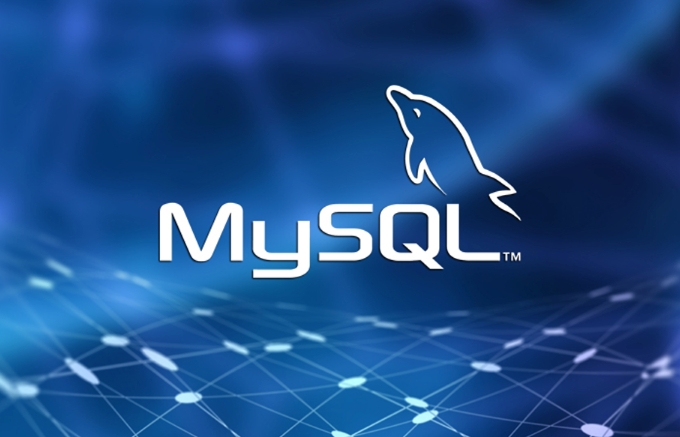Troubleshooting 'Access denied for user' error 1045 in MySQL
Jul 04, 2025 am 12:37 AM"Access denied for user" (Error 1045) Errors are usually caused by problems with login credentials, user permissions, or authentication methods. 1. First, confirm that the username and password are correct, check whether there are spelling errors, case mismatches or extra spaces, and verify that the values ??in the script or configuration file are accurate. 2. Then check the user permissions and host access settings, use SELECT User, Host FROM mysql.user to confirm the host that the user allows to connect, and create or update user permissions through the CREATE USER and GRANT commands if necessary to match the connection source. 3. Finally, verify that the authentication plug-in of MySQL is compatible. If the client does not support caching_sha2_password, you can change it to mysql_native_password through the ALTER USER command to ensure compatibility.

If you're seeing the error "Access denied for user" (Error 1045) when trying to connect to a MySQL database, it usually means there's an issue with your login credentials or user permissions. It's a common problem, especially during setup or when moving between environments like local and production.

Check Username and Password
The most straightforward reason is that the username or password is incorrect. This might seem obvious, but typos happen more often than you'd think — especially when passwords contain similar-looking characters like 0 and O , or l and I .

Make sure:
- You're using the correct username.
- The password matches exactly, including case sensitivity.
- There are no extra spaces before or after the password.
If you're connecting from a script or config file, double-check those values ??too. A misplaced quote or comment symbol can also cause issues without throwing any syntax errors.

Confirm User Privileges and Host Access
MySQL has a pretty granular permission system. Even if the username and password are right, access could be denied based on which host the connection is coming from.
For example:
- If your user is defined as
'myuser'@'localhost', it won't work if you're connecting from a remote machine or even via IP (127.0.0.1). - Conversely, if the user is set up for remote access (
'myuser'@'%') but you're connecting locally through Unix socket, some settings might not match correctly depending on how they're configured.
To fix this:
- Log in to MySQL as root or another privileged user.
- Run:
SELECT User, Host FROM mysql.user;
This will show what users exist and which hosts they're allowed to connect from.
- If needed, create or update the user with the correct host:
CREATE USER 'myuser'@'%' IDENTIFIED BY 'password'; GRANT ALL PRIVILEGES ON mydb.* TO 'myuser'@'%'; FLUSH PRIVILEGES;
Also make sure the database name and table-level privileges are correct if you're accessing specific databases or tables.
Verify MySQL Authentication Plugin
Sometimes, the way MySQL authenticates users has changed, especially if you're working with newer versions (like 8.0 ). By default, MySQL 8 uses caching_sha2_password , which might not be supported by older clients or certain tools.
You can check what authentication plugin a user is using by running:
SELECT User, Host, plugin FROM mysql.user;
If your client doesn't support that plugin, consider changing it:
ALTER USER 'myuser'@'%' IDENTIFIED WITH mysql_native_password BY 'password'; FLUSH PRIVILEGES;
This change can help avoid compatibility issues while still keeping things secure, especially in development environments.
That's about it. Most of the time, one of these three areas — credentials, host permissions, or auth method — is where the problem lies. Keep it simple, check each part step by step, and you'll probably find the culprit fast.
The above is the detailed content of Troubleshooting 'Access denied for user' error 1045 in MySQL. For more information, please follow other related articles on the PHP Chinese website!

Hot AI Tools

Undress AI Tool
Undress images for free

Undresser.AI Undress
AI-powered app for creating realistic nude photos

AI Clothes Remover
Online AI tool for removing clothes from photos.

Clothoff.io
AI clothes remover

Video Face Swap
Swap faces in any video effortlessly with our completely free AI face swap tool!

Hot Article

Hot Tools

Notepad++7.3.1
Easy-to-use and free code editor

SublimeText3 Chinese version
Chinese version, very easy to use

Zend Studio 13.0.1
Powerful PHP integrated development environment

Dreamweaver CS6
Visual web development tools

SublimeText3 Mac version
God-level code editing software (SublimeText3)

Hot Topics
 What is GTID (Global Transaction Identifier) and what are its advantages?
Jun 19, 2025 am 01:03 AM
What is GTID (Global Transaction Identifier) and what are its advantages?
Jun 19, 2025 am 01:03 AM
GTID (Global Transaction Identifier) ??solves the complexity of replication and failover in MySQL databases by assigning a unique identity to each transaction. 1. It simplifies replication management, automatically handles log files and locations, allowing slave servers to request transactions based on the last executed GTID. 2. Ensure consistency across servers, ensure that each transaction is applied only once on each server, and avoid data inconsistency. 3. Improve troubleshooting efficiency. GTID includes server UUID and serial number, which is convenient for tracking transaction flow and accurately locate problems. These three core advantages make MySQL replication more robust and easy to manage, significantly improving system reliability and data integrity.
 What is a typical process for MySQL master failover?
Jun 19, 2025 am 01:06 AM
What is a typical process for MySQL master failover?
Jun 19, 2025 am 01:06 AM
MySQL main library failover mainly includes four steps. 1. Fault detection: Regularly check the main library process, connection status and simple query to determine whether it is downtime, set up a retry mechanism to avoid misjudgment, and can use tools such as MHA, Orchestrator or Keepalived to assist in detection; 2. Select the new main library: select the most suitable slave library to replace it according to the data synchronization progress (Seconds_Behind_Master), binlog data integrity, network delay and load conditions, and perform data compensation or manual intervention if necessary; 3. Switch topology: Point other slave libraries to the new master library, execute RESETMASTER or enable GTID, update the VIP, DNS or proxy configuration to
 How to connect to a MySQL database using the command line?
Jun 19, 2025 am 01:05 AM
How to connect to a MySQL database using the command line?
Jun 19, 2025 am 01:05 AM
The steps to connect to the MySQL database are as follows: 1. Use the basic command format mysql-u username-p-h host address to connect, enter the username and password to log in; 2. If you need to directly enter the specified database, you can add the database name after the command, such as mysql-uroot-pmyproject; 3. If the port is not the default 3306, you need to add the -P parameter to specify the port number, such as mysql-uroot-p-h192.168.1.100-P3307; In addition, if you encounter a password error, you can re-enter it. If the connection fails, check the network, firewall or permission settings. If the client is missing, you can install mysql-client on Linux through the package manager. Master these commands
 Why is InnoDB the recommended storage engine now?
Jun 17, 2025 am 09:18 AM
Why is InnoDB the recommended storage engine now?
Jun 17, 2025 am 09:18 AM
InnoDB is MySQL's default storage engine because it outperforms other engines such as MyISAM in terms of reliability, concurrency performance and crash recovery. 1. It supports transaction processing, follows ACID principles, ensures data integrity, and is suitable for key data scenarios such as financial records or user accounts; 2. It adopts row-level locks instead of table-level locks to improve performance and throughput in high concurrent write environments; 3. It has a crash recovery mechanism and automatic repair function, and supports foreign key constraints to ensure data consistency and reference integrity, and prevent isolated records and data inconsistencies.
 Why do indexes improve MySQL query speed?
Jun 19, 2025 am 01:05 AM
Why do indexes improve MySQL query speed?
Jun 19, 2025 am 01:05 AM
IndexesinMySQLimprovequeryspeedbyenablingfasterdataretrieval.1.Theyreducedatascanned,allowingMySQLtoquicklylocaterelevantrowsinWHEREorORDERBYclauses,especiallyimportantforlargeorfrequentlyqueriedtables.2.Theyspeedupjoinsandsorting,makingJOINoperation
 What are the transaction isolation levels in MySQL, and which is the default?
Jun 23, 2025 pm 03:05 PM
What are the transaction isolation levels in MySQL, and which is the default?
Jun 23, 2025 pm 03:05 PM
MySQL's default transaction isolation level is RepeatableRead, which prevents dirty reads and non-repeatable reads through MVCC and gap locks, and avoids phantom reading in most cases; other major levels include read uncommitted (ReadUncommitted), allowing dirty reads but the fastest performance, 1. Read Committed (ReadCommitted) ensures that the submitted data is read but may encounter non-repeatable reads and phantom readings, 2. RepeatableRead default level ensures that multiple reads within the transaction are consistent, 3. Serialization (Serializable) the highest level, prevents other transactions from modifying data through locks, ensuring data integrity but sacrificing performance;
 What are the ACID properties of a MySQL transaction?
Jun 20, 2025 am 01:06 AM
What are the ACID properties of a MySQL transaction?
Jun 20, 2025 am 01:06 AM
MySQL transactions follow ACID characteristics to ensure the reliability and consistency of database transactions. First, atomicity ensures that transactions are executed as an indivisible whole, either all succeed or all fail to roll back. For example, withdrawals and deposits must be completed or not occur at the same time in the transfer operation; second, consistency ensures that transactions transition the database from one valid state to another, and maintains the correct data logic through mechanisms such as constraints and triggers; third, isolation controls the visibility of multiple transactions when concurrent execution, prevents dirty reading, non-repeatable reading and fantasy reading. MySQL supports ReadUncommitted and ReadCommi.
 How to add the MySQL bin directory to the system PATH
Jul 01, 2025 am 01:39 AM
How to add the MySQL bin directory to the system PATH
Jul 01, 2025 am 01:39 AM
To add MySQL's bin directory to the system PATH, it needs to be configured according to the different operating systems. 1. Windows system: Find the bin folder in the MySQL installation directory (the default path is usually C:\ProgramFiles\MySQL\MySQLServerX.X\bin), right-click "This Computer" → "Properties" → "Advanced System Settings" → "Environment Variables", select Path in "System Variables" and edit it, add the MySQLbin path, save it and restart the command prompt and enter mysql--version verification; 2.macOS and Linux systems: Bash users edit ~/.bashrc or ~/.bash_






